Bodil Kjær Principles of Principal
Gijs

Bakker
Like blue jeans, the GB lounge has never gone out of fashion
Afra and Tobia Scarpa
A petal and a cube: bringing back the 121 and 925 chairs
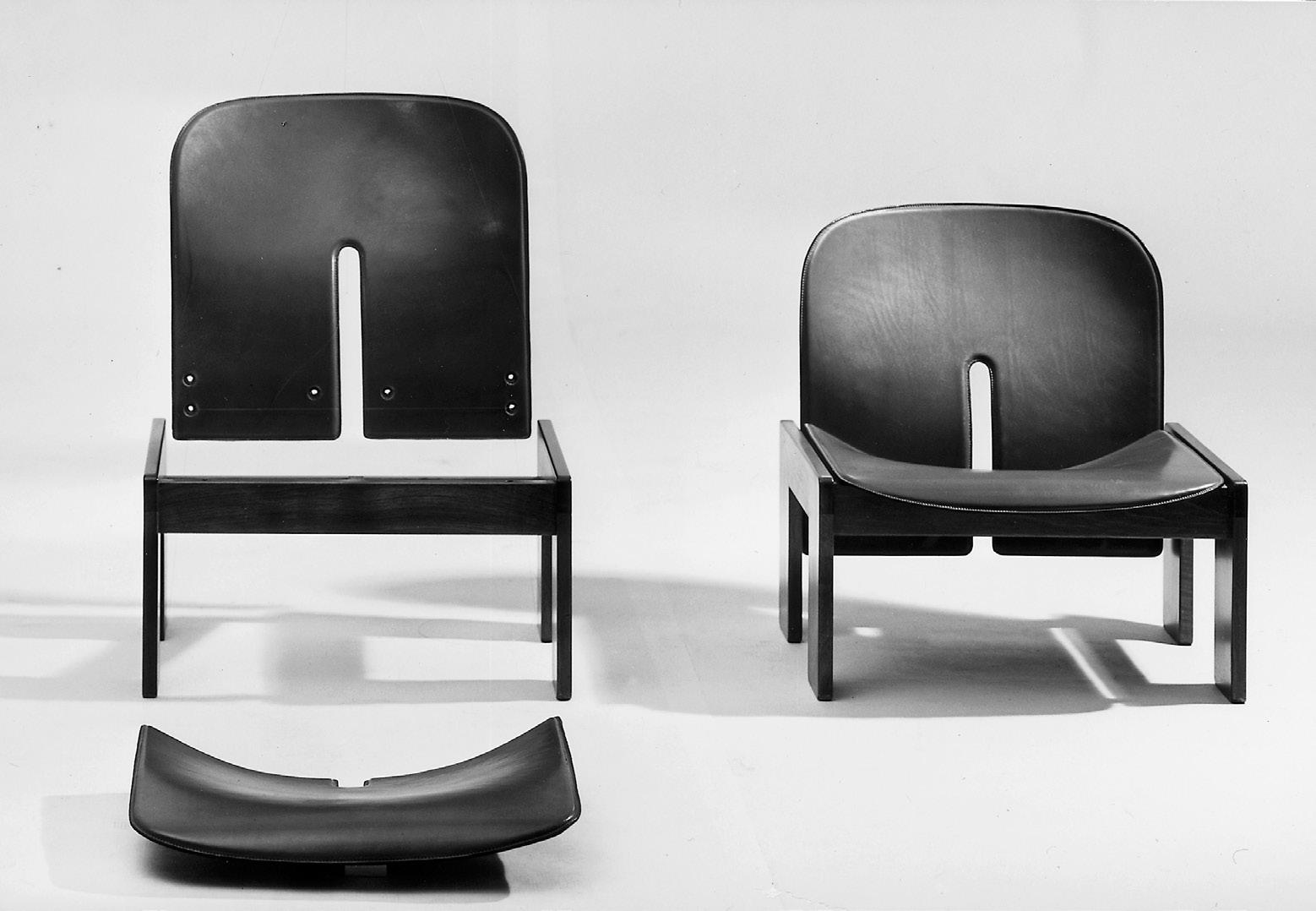

conversations VOL.1 SPRING 2023
MICHAEL
ANASTASSIADES DESIGN FUNDAMENTALS — ALDO BAKKER’S MOOD
Founder Karakter
Editor Jeni Porter
Copy Editor William Fraser
Creative team NR2154
Creative producer Karakter
Publisher Karakter ApS
Contributors Andrea Ferrari, Heidi Lerkenfeldt, Anders Schønnemann, Matt Harrington, Tom Jamieson, Eirini Vourloumis, Kasia Bobula Contact info@karakter-copenhagen.com
CONVERSATIONS ALL RIGHTS RESERVED. NO PART OF THIS PUBLICATION MAY BE REPRODUCED, DISTRIBUTED OR TRANSMITTED IN ANY FORM OR BY ANY MEANS, INCLUDING PHOTOCOPYING OR OTHER ELECTRONIC OR MECHANICAL METHODS, WITHOUT PRIOR WRITTEN PERMISSION OF KARAKTER, EXCEPT IN THE CASE OF BRIEF QUOTATIONS EMBODIED IN CRITICAL REVIEWS AND CERTAIN OTHER NON-COMMERCIAL USES PERMITTED BY COPYRIGHT LAW. FOR PERMISSION REQUESTS, WRITE TO: PRESS@KARAKTER-COPENHAGEN.COM
The decision to call the first edition of our new paper, Conversations, was based on the desire to show the depth and breadth of our designers, their ideas and their designs, and our inspirations. A brand book or catalogue can be a beautiful testament to a brand’s portfolio, imagery and style, but it rarely shows the huge thought process and lived life that is distilled into the actual pieces. Conversations will be released biannually so that we can tell and show all the interesting stories shared by our designers and our friends.
We want to show how beauty, curiosity or good design can trigger an emotion and why we gravitate towards some design expressions more than others. In Conversations we ask some of our designers, friends of the family, and people who intrigue us, what drove them to the path they chose. It is these decisions based on their personal experiences that instills their character into each piece. They want to stimulate our senses, evoke a feeling and, in stripping off all superfluous details, show the essence of a piece.
In this debut issue we are re-introducing two classic and iconic designs by Afra and Tobia Scarpa: the 925 lounge chair and 121 dining chair. We also talk to Gijs Bakker whose GB Lounge from 1972 has been revisited with minor changes and looks as fresh as ever.
Another pioneer in design whose work has experienced a huge resurgence of interest in recent years, is the Danish architect Bodil Kjær, a pioneering woman who stood tall among the men in the golden era of mid-century modern design, but who pursued her own path. Her furniture stands apart as a result of her diverse range of inputs and references from an international career spanning almost 60 years in architecture, urban planning and academia.
Two contemporary creatives who are very important to Karakter, are Michael Anastassiades and Aldo Bakker. They both master the art of creating pieces that resonate with us on a deeper level and evoke a feeling. They create designs with character. As Michael says in his conversation with us, honesty is a key element of timeless design; a piece should communicate itself and not try to be something it isn’t. His first ever sofa, Middleweight for Karakter, is a testament to this ethos.
Aldo Bakker believes in not following the current of trends but instead standing on the shore and letting the current flow past. Aldo’s pieces are honest, calm and yet powerful at the same time, and they too no longer bear witness to their designer, but exist on their own as individual characters.
We speak to gallerists, Loïc Le Gaillard and Julien Lombrail of Carpenters Workshop Gallery who saw these exceptional qualities in Aldo Bakker and have created several solo exhibitions with him as well as having him curate their highly successful exhibition Tangerine at TEFAF New York.
Through the launch of Conversations, we hope to welcome you into our amazing world. To paraphrase Loïc Le Gaillard, at Karakter we are storytellers through the designers, and we hope to not only create and sell furniture, but also create beautiful stories.
Christian Elving
& Co-Founder Karakter
VOL.1 SPRING 2023
FOUNDER’S LETTER
Ceo
A poet of design
“I have devoted my knowledge and ability to companies. I make things as I know how, and I try to be simple, without arrogance.” When Tobia Scarpa was awarded a Compasso D’Oro for lifetime achievement in 2008, the jury of Italy’s most prestigious design award described him as an “architect in the most cultured sense of the term but also a prolific designer… In his work, tradition and innovation are welded together in one of the finest and most coherent lessons on method and creative freedom.” Designing with his late wife Afra in the 1960s and 1970s Scarpa created some of the most
representative icons of Italian design, they said. His continuous and passionate research aimed at reinventing how materials are used has played a significant part in the recognition of Italian design. Now 88, and still active in his studio in Treviso in the Veneto region of Italy, Scarpa is enjoying a renaissance of many of these designs, re-interpreted and relaunched using contemporary know-how and technology, but retaining their original essence. Although renowned for his attention to production processes, technological and formal innovation, it is the poetic and expressive side of his oeuvre
In a six-decade-long career as an architect and designer, Tobia Scarpa made history creating some of Italian design’s most recognisable icons and bringing emotion and lyricism to form.

that sets him apart. Describing Scarpa’s shining yet secluded six-decade long career, Walter Mariotti, the editorial director of influential architecture and design magazine, Domus, describes him as “more closely resembling a poet than an industrial designer, looking deep within to better understand ‘us’.” Design is a profession without a rule book, Scarpa believes, and the end result: objects, speak for themselves. “What is wonderful about objects is when they are simple and show their inner strength,” he told Mariotti.
In the biographical film Tobia Scarpa: L’anima segreta delle
cose (The secret soul of things), Scarpa says that reading a poem, falling in love or noticing the poetry within an object opens up your heart and makes you feel as if you have a positive right to exist. This sensibility is encapsulated in his designs: materiality, honesty, knowledge, philosophy. Materials have a calling of their own, he believes, a vocation he facilitated making furniture in solid walnut or elm and leather or carved from one block of Carrara marble, like the Biagio lamp, more sculpture than design.
Born in Venice in 1935, Scarpa is the son of Carlo, the leading modernist architect (1906-
CONVERSATIONS
KARAKTER COLLECTION
1978). The wisdom of the father was handed down to the son, generation to generation, almost by osmosis. “He was my teacher, but he never taught me anything; it was enough to have him next to me to fall in love with quality. I am the continuation of him, not the copy of him.” In the film, he says the first object he ever drew was a big, long table for a party to celebrate his father’s getting a bonus from Olivetti.
Scarpa met Afra Bianchin in the late 1950s when they were both studying at the Istituto Universitario di Architettura in Venice. Together they formed a formidable partnership, alert to dramatic changes underway in Italy at that time and evolving ways of living. Their shared vision was to create modern, functional and elegant furniture derived from thought rather than objective, which they achieved with great finesse, creating a body of work that made history. They won numerous design prizes and accolades, including the Compasso d’Oro award in 1970 for the Soriana chair, produced by Cassina. Several pieces are in museum collections, the 925 chair in the Museum of Modern Art and the Libertà chair in the Louvre.
Scarpa has also had an illustrious career as an architect, working for public and private clients, notably designing the industrial area and production plants for the Benetton Group in Treviso, revered as an example of aesthetic-functional excellence. He also participated in the restoration of masterpieces of Italian architecture such as the Palazzo della Ragione in Verona and the Gallerie dell’Accademia in Venice. Ca’ Scarpa, a recent project in a deconsecrated church in Treviso, is fittingly dedicated to the architectural and cultural legacy of Carlo and Tobia Scarpa, father and son.
A PETAL AND A CUBE: bringing back the 121 and 925 chairs
KARAKTER COLLECTION
These timeless classics speak for themselves but also effortlessly mingle with contemporary designs and sculptural elements.
Drawn from the purest of references, the 121 chair began with the idea of putting a cube and a petal together and playing up their contrasting characteristics. “I thought the elegance of a petal could become the back of a chair. Then you would need a structure to support it and this structure became a cube to indicate the solidity of the article,” says Tobia Scarpa of the 121 chair designed in 1965 and the 925 lounge chair that followed a year later.
With their simple, forthright expression and strong materiality the 121 and 925 became instant icons, in museum collections and the homes of discerning collectors. Their standing today, almost 60 years after they were created, is amplified by the passing of time and how they speak to contemporary sensibilities.
“We have a 925 chair in our home in Milan that is one of a number of pieces from this prolific and ingenious

designer. I love Tobia Scarpa’s formal clean lines and at the same time the poetry and expression of his drawings,” says Arianna Lelli Mami, creative director and co-founder of Studiopepe, a Milan-based design studio. Her partner the photographer Andrea Ferrari was lucky enough to live in a house decorated by Scarpa as a child. “Different pieces that he grew up with are now in our home, perfectly coalescing with the style, which is always on the move and evolving like us,” she says. Timeless iconic pieces speak for themselves but don’t disdain becoming part of a broader family, comprising contemporary design elements and sculptural pieces, says Lelli Mami of her design ethos. That’s what makes a great project.
The key to the enduring allure of the 121 and 925 is their honest materiality. The cube is made from what looks like rudimentary pieces of wood, solid and easily assembled, and showing their strength as the supporting structure. The petal is formed from the leather-clad plywood backrest and seat, achieving

lightness from the curve and thinness of the plywood, and tactility and patina from the leather. Scarpa put a cut in the lower part where the torsion stress is strongest, a structural element that became a signature detail.
The 121 and 925 chairs are being relaunched in 2023 by Karakter in conjunction with Cassina, as part of a larger mission to recover and safeguard the works of Tobia Scarpa. Karakter co-owner and CEO Christian Elving is delighted to be introducing the two chairs to a new audience and to add the name of Scarpa to the company’s designer portfolio.
“To me Tobia Scarpa is one of the true legends of Italian design. The 121 and 925 chairs, designed with late wife Afra, epitomise his belief in striving for a simplicity and clarity of design that means objects speak for themselves and show their inner strength through materiality and a purity of vision.”
Karakter will produce the 121 and 925 in solid ash with a natural or smoked mocha finish and saddle leather in natural, mocha, black, red and cognac.
VOL.1 SPRING 2023
Photography Andrea Ferrari
A 925 CHAIR IN THE MILAN HOME OF ARIANNA LELLI MAMI AND ANDREA FERRARI
visionary thinking
KARAKTER COLLECTION
By Jeni Porter — Photography Heidi Lerkenfeldt
When Bodil Kjær designs furniture she does it with the mindset of an architect. The pieces materialise from a rigorous assessment of function, need and aesthetics. She thinks about structures and strength and space. “My furniture designs come from architecture. I think in structures,” says the celebrated

Danish architect. “Would it hold up, can you pull it apart, how do the people in the factory put it together?” The furniture, be it chair, table, desk, cabinet or serving cart is not conceived as individual pieces but rather constituent parts of a whole environment. What Kjær calls “Elements of Architecture”. “I am not a furniture designer. I am a designer of environments of the environment,” she says. And a problem solver. “I go out, I see a problem and I work with other people to solve it.”
Still an active researcher and educator, Kjær, 91, says her interest in becoming one of those who created smaller elements of architecture, was seeded in her teens during a year
of language studies in England. On her return she enrolled in the State School of Interior Architecture in Copenhagen for three years of study under Finn Juhl, securing her first design job in Aarhus, near where she grew up on land in the countryside owned by her family since the 1400s. It was during a twoyear stint in the US in 1958-59, sponsored by the American Scandinavian Foundation and working for Contract Interiors in Boston, that she drew some of her most iconic furniture for specific contexts. The Office Desk, which immortalised her work, was one component from a series designed for a modern flexible workplace. The cross form became a familiar

motif, for its strength and support. “I did not start any of my design processes by choosing a form or shape,” she says. “The cross materialised during the design process. In the furniture, as the result of my wanting very strong structures and knockdown structures to accommodate storage, transportation and replacement of parts and ease of understanding of the build of an item.”
It is important that furniture can be read, she says, that it looks like how it will be used and that users can see and understand how it is constructed. While her approach was intellectual and pragmatic the outcome was a refined version of mid-century modern with

CONVERSATIONS
By imagining furniture as part of a broader architectural environment Bodil Kjær pioneered a mid-century design aesthetic that seems as modern today as when it was conceived.
enduring aesthetics. Her furniture pieces are pared-back and elegant, sleek even, like her Office Desk, a floating timber platform on a metal base, with an expression that is more international than those of her compatriots designing around the same time in the 1950s and 60s. Kjær was so forward thinking her ideas have as much resonance today as they did when she first enunciated them as a prodigiously talented 30-year old, some 60 years ago. She forged her own path , eschewing a single focus on furniture and instead pursuing a diverse career in architecture, urban planning and academia largely outside Denmark. Some attribute her contemporary relevance to this diverse range

of inputs and references and an international outlook which underpinned a belief system that speaks to contemporary concerns about sustainability and creative collaboration. “My aim is to create healthy and enjoyable environments for people, the users… rational as well as sensuous beings,” she says, encapsulating her philosophy in a list of concerns: collaboration instead of competition; delight and beauty rather than opulence and vulgarity; playing and enjoying rather than stressing and domineering. She is currently developing pieces for a hotel to be made in recycled wood. “But then I have always been into reuse, sustainability, biodiversity, alternative energy and, in general, saving the climate,” she declares.
FROM CONSTRUCTION PRINCIPLES TO PRINCIPAL: how strength and structure result in sheer beauty
Designed for a competition held in Denmark in 1963, the Principal series was unique for Bodil Kjær, the only furniture created conceptually rather than for a specific project and space. Kjær, then 31, was running her own studio in Copenhagen, designing showrooms, exhibitions, work spaces and furniture. It wasn’t exactly the swinging 60s, like London where she later headed, but there was a revolution underway in Denmark in how people lived. “I chose to research and design a series of elements of an indoor landscape of furniture that might be enjoyed by a young couple in their first home in a rented apartment or a small house,” says Kjær. The series included a dining table, dining chair, stool, bench and sideboard, plus wall-hung, round and soft back rests, and a wall-hung deep frame for displaying a beloved object or picture. Her drawings, showing the crisp clear form including a distinctive three-dimensional joint are precise and considered. Although never prototyped, the drawings were enough to inspire Christian Elving of Karakter to put what Kjær had called the Z series into production, naming it Principal in honour of its strong design and construction principles. With Principal Kjær uses a threedimensional form rather than the more conventional flat or smooth joint of much furniture. It is a
distinctive element that telegraphs its strength but also shows the sheer beauty of structure. “I have chosen to make the upstanding parts of the structure cross-shaped to provide strength of wooden parts,” she says. In contrast to the linear geometry of the solid wooden dining table, the dining chair has a circular seat and rounded backrest, both upholstered to ensure comfort.

“Young people today seem to like the pieces, maybe because they can so easily understand how the pieces are constructed, how easily they may be taken apart for repair or for re-use of the materials and, maybe they like the idea of a landscape of furniture rather than the series of objects furniture they grew up with,” says Kjær.
 KARAKTER COLLECTION
KARAKTER COLLECTION
VOL.1 SPRING 2023
Photography Anders Schønnemann
OFFICE DESK, PRICIPAL CHAIR
Time gift gallerist’s the space and

CONVERSATIONS
RING TABLE BY ALDO BAKKER IN THREE ITERATIONS: CONSOLE IN SALOMÉ MARBLE, BRACELET IN URUSHI LACQUER, RING IN GOLD AT TEFAF NEW YORK, CARPENTERS WORKSHOP GALLERY
It can take Aldo Bakker years of careful deliberation to produce one unique object. The Dutch artist says his is an organic process that cannot be controlled, the pieces materialise as individual characters through dedication and a desire for perfection that he cannot ignore. “I try to create a situation where I have the freedom and the space to do the things as I feel them and then something comes out of it or it doesn’t.” He doesn’t promise anyone anything. His gallerists, Loïc Le Gaillard and Julien Lombrail of Carpenters Workshop Gallery, understand the process and give him space and support, Bakker says. “He doesn’t give me much choice,” quips Le Gaillard in response. “That’s why we have a roster of 45 artists, we have the luxury of being able to give the artists the space to go at their own pace… The artist needs to take his time to reach the maturity he wants for the artwork and this artwork will be relevant because it has gone through this thorough thinking, emotional, artistic process.”
in 2006 as contemporary collectible design was just emerging as an artistic category. By any measure they have been enormously successful. With spaces in London, Paris, New York and Los Angeles they command a segment of design specifically within the realm of art, functional sculptures as they say. Le Gaillard attributes their success partly to the slow artistic process. “Precisely, to only come to market when we feel that an object or an artwork has reached its full maturity both on its form, its function and the story. You can’t fake the funk, it’s got to be right.” Sometimes they push their artists in certain directions, suggesting to Bakker that he use more exotic stone for some of his marble pieces and that he make jewellery. The latter resulted in pure alchemy. Bakker created a ring of four complementary elements interlocked around a central void, a form that can be scaled indefinitely, each edition existing independently. “Loic and Julien asked me to do jewellery, the outcome is Ring Table, depending on its size, it can be a ring, a bracelet, a stool, a side table, a console, maybe even architecture,” says Bakker. For the Tangerine exhibition during TEFAF in New York last year, he produced a gold ring, an Urushi lacquer bracelet and a console in Salomé marble, its soft pink and stony grey gradations enhancing the expression of the form. Bakker also curated and did the scenography for the exhibition which featured Dutch contemporary artists, a role reversal he found stimulating and also challenging. “What is really great is that we get the opportunity from this gallery to produce a piece like console for a
Ring Table in this beautiful stone which has been since been sold.” More recently he made a side table in walnut.
After almost 30 years in the business, Le Gaillard says he increasingly struggles with the mercantile side of his role. He likes to see Lombrail and himself as storytellers on a journey with their artists, that enriches them both. “With them and with me,
we pay our bills but I would say this is almost irrelevant, the real reason why we do this is because we are challenged emotionally and it makes our life a beautiful life. No one needs another dining table, another console, another ring – we have way too many. We need stories for grown-ups. With the artist we are storytellers. I don’t sell consoles, I sell you a beautiful story.”
In June Loïc Le Gaillard and Julien Lombrail will open Ladbroke Hall, an arts destination combining flagship gallery, restaurant, salons, recording studio and a hidden garden in a 1903 building in London’s Notting Hill. It is an ambitious manifestation of their desire to interact with people without an end game, to engage, stimulate, educate, feed even. “I don’t always want to be the guy trying to sell something or do business. I want to be able to invite you into my eco-system and have a glass of red wine, a pasta and listen to some jazz or hiphop,” says Le Gaillard. Design will be central but the immersive space will offer a much broader window into the arts with a capital A, he says. “This is my utopian project. I want Ladbroke Hall to be a temple of any form of artistic expression curated by Julien and myself.”


VOL.1 SPRING 2023
space
Ladbroke Hall
PROFILE
The artistic process is a creative journey that cannot be rushed, says gallerist Loïc Le Gaillard of Aldo Bakker. You can’t fake the funk.
GALLERY
Le Gaillard and Lombrail founded Carpenters Workshop in London
By Jeni Porter — Photography Matt Harrington, Portrait Tom Jamieson
Bend it like
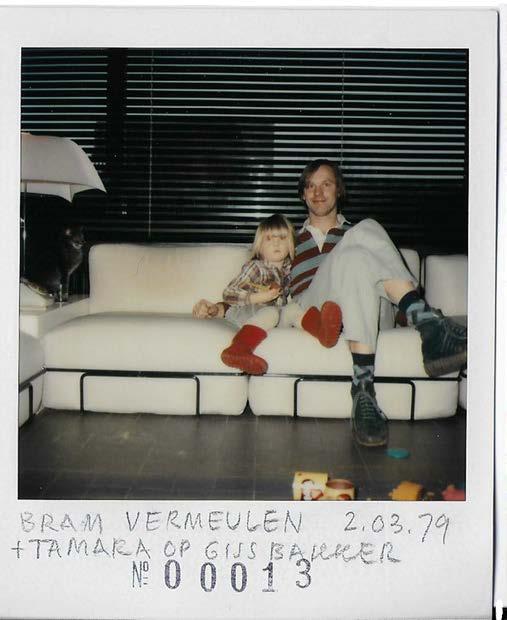
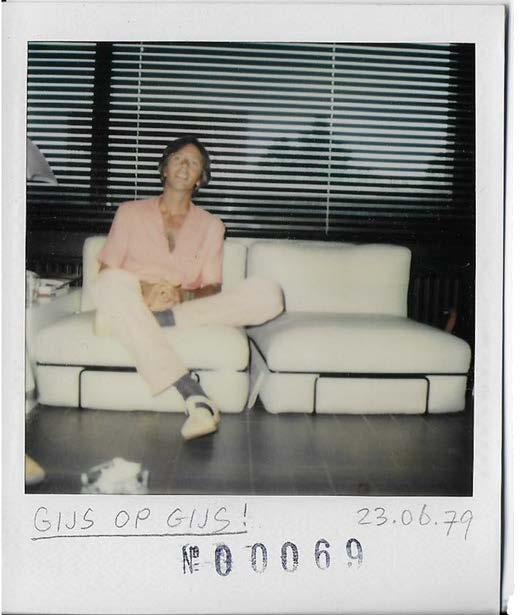



Bakker

CONVERSATIONS
KARAKTER COLLECTION
By Jeni Porter — Polaroids by Henrik Barends

The power of good design is especially evident when the object exists outside its original context, transcending the specific circumstances in which it was conceived and having a universal relevance. Gijs Bakker designed his GB Lounge Chair in 1972, in the wake of the sixties when radical young designers like himself were rethinking interiors, furniture and ways of living. “We were the youth of the future,” he says. When he met up with friends they sat on cushions on the floor rejecting the bourgeois taste for plump sofas. Trained as a jewellery designer, his first industrial design commission was a pair of glasses, reduced to nothing more than a frame that keeps two lenses together. Then the Dutch designer read about a competition from Dunlop, a British producer of foam for the furniture industry.
“I simply took a piece of foam, bent it in a corner of 90 degrees,
made a little frame around it, and that’s it,” he says of the scale prototype for a modular chair emulating his preference for an easy informal lifestyle.

Jeans were in fashion so he used them for the upholstery cover, complete with orange seams and a metal frame in that colour. He even added a pocket for newspapers and magazine.

Levi’s chair was born: “a chair that fits like a Levi’s jean”, as it said on a promotional poster.
Bakker’s friend graphic designer
Henrik Barends documented life on the chairs with a series of polaroid photos seven years later showing Bakker, wife Emmy van Leersum, son Aldo and various writer and artist friends. “Gijs op Gijs!,” (Gijs on Gijs) is the caption on a photo of maker and object. But the cotton coverings proved unsuitable and the oil crisis doubled the price of foam so that was the end of the story.

Bakker went on to have a career
spanning the design spectrum as an influential creator, educator and advocate, co-founding the experimental Dutch collective Droog Design with Renny Ramakers, and encouraging the new generation of artists and designers to follow their own path as he has done.
“First there is the idea or desire that I want something and then I start to make sketches and develop it,” says the 80-year-old designer. Working from his studio in Amsterdam, he pursues what he calls “conceptual design in context”. In recent years some of his early work has been reedited, jewellery pieces and the chair, which was launched as the GB Lounge Chair by Karakter in 2022. The new version has feet that raise it slightly from the floor and is upholstered in leather or high quality Kvadrat textiles. Available as a one-seater chair and pouf it can be assembled in a variety of ways, perfectly
suiting contemporary life. Bakker says it is a more sophisticated version of his original chair but “I still hope that it keeps the freshness and the direct height and the easy-going idea, that it is just a bent mattress, that’s it and nothing more.”
To Bakker this rebirth is a vindication of all that he has stood for in his six-decade career. “The recycling of the old, that is more than the original GB chair from 1972 that I feel as a kind of victory. It proves that the way I work, the way I design, is not influenced by fashion or the madness of the day.”
Droog30, a retrospective celebrating 30 years of experimental Dutch design, La Triennale Milan, April 15-23, and Nieuwe Instituut, Rotterdam, May 2-August 27, 2023.
VOL.1 SPRING 2023
The GB Lounge is a riff on a bent mattress and living proof that the way Gijs Bakker designs is beyond fashion and the madness of the day.

CONVERSATIONS
Today I look to a very sophisticated version but it keeps the freshness, direct height and easy-going idea of the original.
— Gijs Bakker

VOL.1 SPRING 2023 GB LOUNGE CHAIR, GB LOUNGE POUF, CROSSPLEX TABLE, AWKWARD LIGHT, SIDE TABLE NO. 2, CONSOLE TABLE
Before finding his voice and language in design, Michael Anastassiades took a meandering path, constantly questioning and redefining the meaning of design and what it meant for him. It was a gradual organic process of experimenting and using design as a form of research, infused with diverse life experiences and cultural knowledge. “Then, much later I found myself,” says the Cyprus-born London-based designer of lights, furniture and objects. After a career spanning more than 20 years, he has developed a philosophy of design as elegant and exact as the pieces he conceives; a timeless vocabulary of the elements of design, distilled to their essence.
By Jeni Porter — Photography Kasia Bobula
Michael Anastassiades: elements of design

CONVERSATIONS
Relevance
—
Ideas appear and reappear over the years and throughout history. As a designer you have to make something relevant to the way we live and contemporary in the context of the times that you find yourself in. Relevant as an object and as an idea. It’s not a gut feeling necessarily, there are certain ingredients, one is timelessness.
Timelessness
—
How do you achieve timelessness? First it is something you can look at or observe simple principles around. Plus, how do you convey that sense of quality, beauty, these kind of things. You don’t achieve timelessness by trying to shock or come up with something you claim as new. It is the continuous interaction with time that makes a design timeless.
Familiarity
—
By introducing the element of familiarity into a design you already have a dialogue with someone, so you can start with that. Then you start creating an ambiguity, ‘this is new but wait a minute it feels like it has always been there and always will be’, I think that’s a big achievement.
Purity
When you are trying to come up with a simple form, it is a reduced approach rather than a minimal one. How do you distil an object by removing information from it. A lot of this process is intuitive. It is aesthetic, trying to purify something until you arrive at the absolute essence, there is no excess, everything is there for a reason.

Honesty
—
Honesty in the way that the piece communicates itself, that it is not trying to be something it isn’t. And honesty in materiality. This is really fundamental to the process. The honest use of materials. They have to be what they are, they have to speak to what they are really about, preserving their inherent qualities.
Life
I have always believed in the life of an object that becomes more beautiful with time. People feel uncomfortable with unpredictability, when they buy something they don’t want to see change. But I believe true beauty is the opposite. You can’t freeze time. Through their materiality objects acquire a life of their own over time.
KARAKTER
VOL.1 SPRING 2023
COLLECTION
MIDDLEWEIGHT: a mediation between aesthetics and comfort
By Jeni Porter — Photography Heidi Lerkenfeldt, Portrait Eirini Vourloumis

KARAKTER COLLECTION
Before he designed the Middleweight series of sofa, chair and table for Karakter, Michael Anastassiades had lived without a sofa at home for ten years. He could never find one that felt right for the space or suited his aesthetics. Over the years his demands changed; while comfort may not have been a priority early on, it too became a parameter. “I said, ‘ok the challenge is a lot bigger’. A sofa is the most difficult piece of furniture to accept purely because it occupies so much space in your home.” Middleweight is a negotiation between those two extremes – aesthetics and comfort –and a sort of mediation between two cultures, Danish and Italian, which Karakter represents.
“Usually the Danish furniture has all the aesthetic qualities but not
necessarily the comfort qualities which the Italian sofa has.” He resolved this dichotomy with a supporting structure that is strong and rigorous in its geometry and yet reduced by the fineness of the metal tube. It supports a soft interior that telegraphs comfort as well as provides it. “I wanted a lightness in the design, to reduce the structure to as little as possible. Then the cushions are the inviting part of it, communicating comfort and tactility.” Their 45-degree mitred stitching defines the boundaries of the sofa and adds a sartorial sophistication to the detailing. The first prototype was in his studio for a year. “We sat on it, we lived in it, then we adjusted the proportions to make it even more comfortable. It’s a nice sofa.”

CONVERSATIONS

VOL.1 SPRING 2023
MIDDLEWEIGHT 2-SEATER SOFA, MIDDLEWEIGHT COFFEE TABLE, DOMO FLOOR LAMP
ALDO’S MOOD


These images speak to Aldo Bakker in a language beyond words.
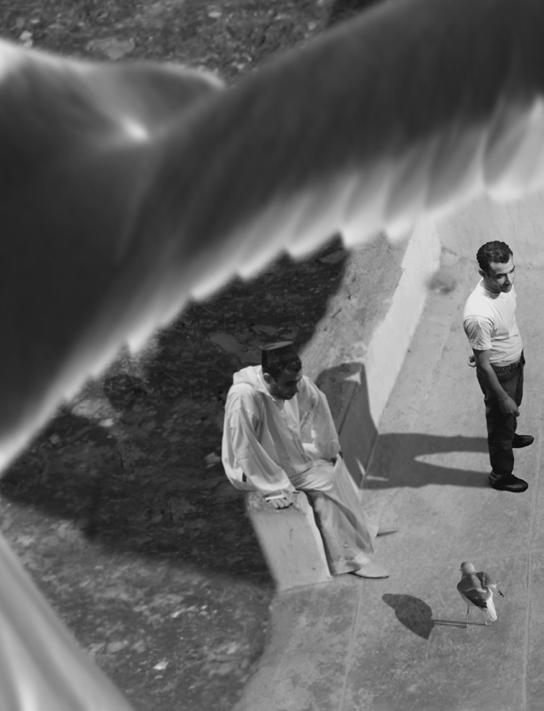
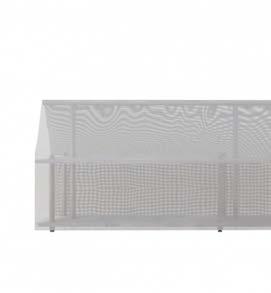



CONVERSATIONS
1. J.M. Coetzee 2. The Algiers’ Sections of a Happy Moment, 2008, single channel video projection, David Claerbout 3. Belle Isle, 1974, Sonja Ferlov Mancoba 4. Not Yet Titled, 2022, bronze, Alma Allen, courtesy Blum & Poe 5. Double pipe stand, Carl Auböck 6. Shuijingfang Museum, Chengdu, Jiakun Architects 7. Still Life with Books, c1618-22, Hercules Segers, © Rijksmuseum 8. AMS (Aluminium Modular Shelf), 2018, aluminium and fabric, Jonathan Muecke 9. BB Sun aka Bolo Nef 10. Luigi Nono
1.
3.
7.
10.
8.
9.
INSPIRATIONS
2.
Aldo Bakker

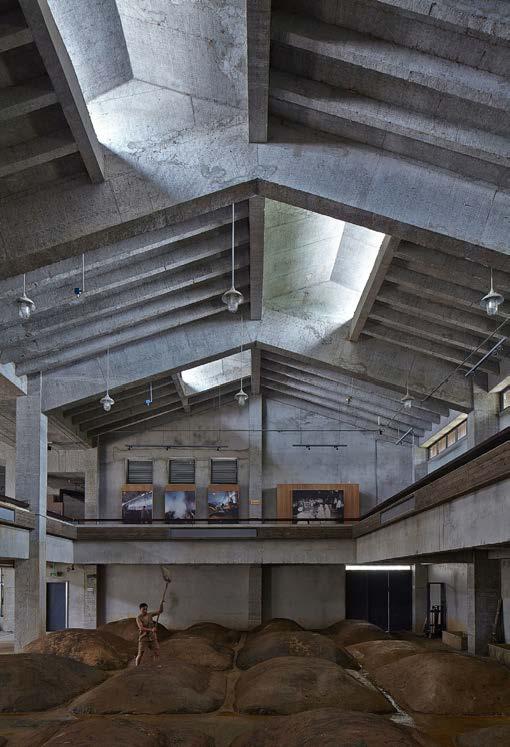
I used this colour for Stool.
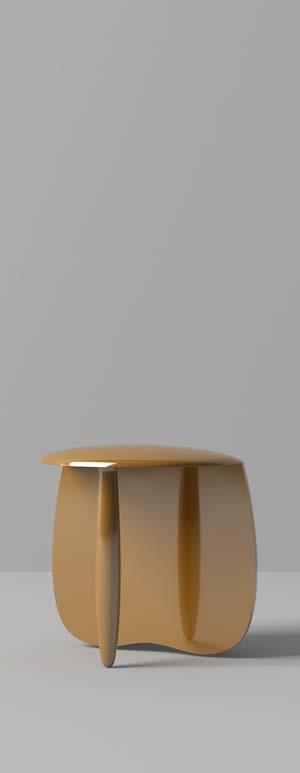


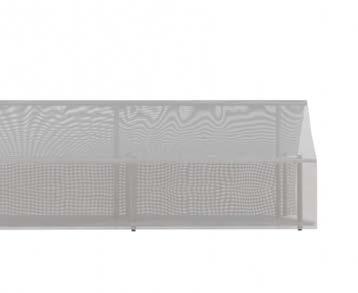 6.
5.
6.
5.
4. VISION
DOUBLE
I love colours that you cannot immediately name due to their complexity, old/aged colours have this but also “double” colours. Pantone 1395 is such a colour and therefore behaves differently throughout the day, becoming somewhat independent. It has both the full and warm of red and the sharp and linear of green.
VOL.1 SPRING 2023
Pantone 1395
COLOUR
Reading a poem, falling in love, or looking at an object and noticing the poetry within it, opens up your heart and makes you feel as if you’ve got a positive right to exist.
Tobia Scarpa












 KARAKTER COLLECTION
KARAKTER COLLECTION
































 6.
5.
6.
5.